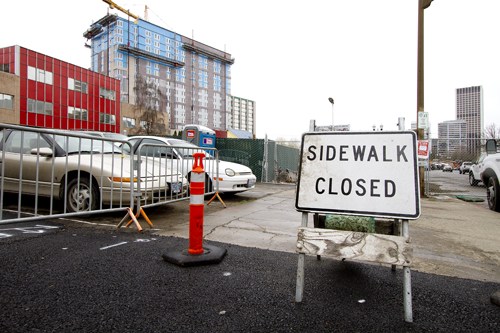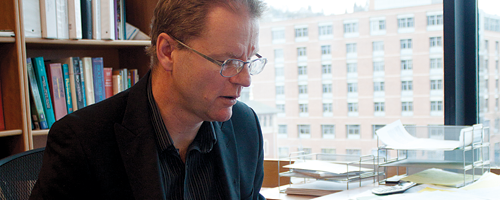Earlier this month, Portland Mayor Sam Adams announced a proposed collaboration between the City of Portland, Multnomah County and Portland State that could result in more than $100 million worth of development for the area surrounding the PSU campus. The suggested Education Urban Renewal Area is a long-term funding plan which aims to help PSU achieve its goals of physical expansion while simultaneously spurring economic investment, creating new jobs and revitalizing a portion of the city.
City of Portland unveils grand goals for PSU growth

Earlier this month, Portland Mayor Sam Adams announced a proposed collaboration between the City of Portland, Multnomah County and Portland State that could result in more than $100 million worth of development for the area surrounding the PSU campus. The suggested Education Urban Renewal Area is a long-term funding plan which aims to help PSU achieve its goals of physical expansion while simultaneously spurring economic investment, creating new jobs and revitalizing a portion of the city.
Erin Flynn, associate vice president for strategic partnerships at PSU, said that the university was chosen as an urban renewal area because the mayor’s office and the City of Portland understand that a vibrant university, especially one so connected to the Portland community, is essential to the city’s future prosperity.
Mark Gregory, associate vice president of finance and administration, wrote in an email interview that this project would help PSU form mutually lucrative community partnerships, as well as aid the City of Portland by creating jobs and improving health and human services.
Both Flynn and Gregory agreed that the current economic downturn necessitates alternative methods for garnering financial support aside from state funding.
“Right now, the university has to be creative about how it expands, because the share of state dollars coming to the university keeps going down, and the only other option is to raise student tuition,” Flynn said. “And students are at a point where any further tuition increase will result in a backlash.”
According to the Portland Development Commission—the city’s urban renewal and economic development agency—urban renewal is essentially a state-authorized investment of property-tax revenues within a designated zone that are used to incentivize private development and hopefully spur economic growth.
Flynn said that urban renewal plans work by freezing the property tax rate at its current level, providing an incentive for private investors to do business in the area. Increased business and investments generate more tax revenue, so by the time the urban renewal plan is complete and the tax rate is unfrozen, tax revenues would have significantly increased. This projected revenue, or “tax increment,” is used to fund the plan. Over the 20–30 year lifespan of a typical urban renewal project, the gradually accrued tax increment helps pay for the area’s development.
“Urban renewal is about better utilizing existing property surrounding the campus and attracting private investment to this area. It will create tax increment that the university can use to invest in the campus infrastructure for new buildings and new laboratories,” Flynn said.
However, she continued, the projected revenue will pay for less than 10 percent of the developments’ costs. The vast majority of a project’s funding will have to be raised, but the tax increment set by the urban renewal plan acts as an economic jump-start and a final push to see the project reach completion.
The Academic and Student Recreation Center is an excellent example of how urban renewal has helped PSU in the past, Gregory said. He said that the Rec Center was built using $35 million in student fees, but urban renewal funding contributed $5.5 million worth of land and cash to the project. Without the urban renewal support, the amount of student fees used to complete the building would have been much higher. With the help of the new urban renewal project, Gregory said, PSU plans to build several new structures, including a new school of business, and will modernize research labs and retrofit existing buildings to make them more energy efficient.
Updating and expanding PSU’s campus and its community partnerships will make the school more competitive and attractive to the faculty and graduate students the university is trying to recruit.
“The Education Urban Renewal Area is a means to grow the University District, PSU and the downtown area. It’s a way for the city to help PSU and for PSU to in turn support the growth and economic health of the city, so both sides win,” Gregory said.
According to Flynn, urban renewal began during the 1950s as a way to stimulate areas of urban decay and poverty, and to make use of underutilized areas. It has since evolved into a tool used by states as a means to promote economic growth within a certain area. Shawn Uhlman, media liaison for the Portland Development Commission, said that the Portland City Council has created 20 urban renewal projects since 1958, 11 of which are still active today. Urban Renewal projects can be found all over the city: The Oregon Convention Center, the downtown waterfront and even the Pearl District are all areas that were improved using this tax-incentive process.
While PSU officials don’t anticipate much public resistance to the proposed Education Urban Renewal Area, the plan still has to be approved by the City Council, who will vote on the issue this coming May.






